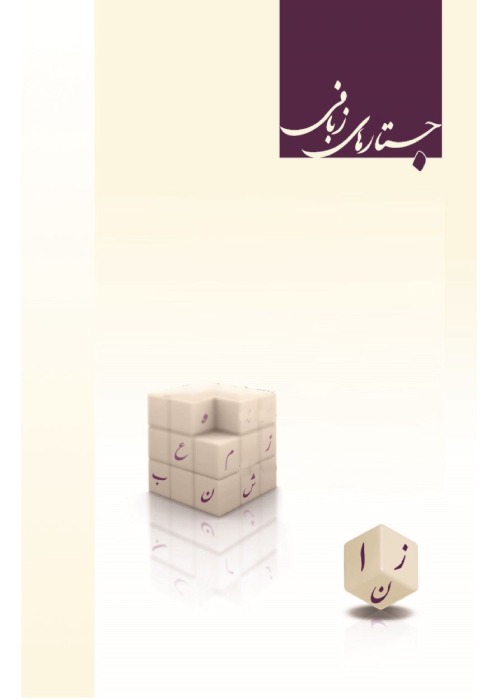The Role and Method of Teaching Vocabulary for the Chinese Learners of Persian as a Second Language
Author(s):
Article Type:
Research/Original Article (دارای رتبه معتبر)
Abstract:
Introduction This article aims to study the place and method of teaching the vocabulary in teaching Persian to Chinese learners. In morphological classification, the structural differences in Persian and Chinese languages makes these learners more difficult to can face in learning vocabulary and understanding the Persian texts. This structural difference causes Chinese learners stop learning when they learn at any stage, if they do not understand the meaning of the words correctly.
Theoretical framework Chinese language belongs to a group of analytic languages and the Persian language is a synthetic language. In analytic languages, the grammatical relations of words in the sentence are expressed through independent syntactic elements, such as the prepositions. In the structure of such languages, words are often made of a morpheme. Therefore, in the construction of analytic languages, the words do not have any internal structure constructed. In this kind of language, syntax relations in a sentence with the word lexical tool not but help out the word by word or grammatical arrangement of words expressed (Alborzi Varaki, ibid:7 In his research on Persian language, Alborzi (ibid:12) believes that the Persian language suggests some degree of links and in some extent is a hybrid language.
Research Methodology This paper, using field research methodology, examines how vocabulary learning is used in Chinese learners. This article empirically examines Chinese students learning of vocabulary. Data come from 24 randomly selected Chinese students who had passed a 16-week course on Persian at Imam Khomeini International University. In order to evaluate their language competence, the students were given a word-centric (vocabulary) test, which suited their level. Students were divided into two groups: test and Control. The test group were taught based on different methods such as vocabulary teaching, structural and functional segmentation and structural matching between the two languages; and the control group were taught based on only teaching vocabulary without translation. A second test was given to the students to assess their learning. Results showed that those students who had been exposed to translation method had a better output.
Conclusion Chinese language learners have a lot of tendency to translate words and they are interested in understanding the meaning of the words. But the translation is meant to express the meaning of words is not enough in all cases. Teacher as an educational guide should use the learner's tendency to learn how they are accustomed to and must be able to balance the various methods. When the translation can be effective, in addition to paying attention to the spatial and syntactic position of the components of the words, that the semantic and functional relation of the words is also considered in the text.
Theoretical framework Chinese language belongs to a group of analytic languages and the Persian language is a synthetic language. In analytic languages, the grammatical relations of words in the sentence are expressed through independent syntactic elements, such as the prepositions. In the structure of such languages, words are often made of a morpheme. Therefore, in the construction of analytic languages, the words do not have any internal structure constructed. In this kind of language, syntax relations in a sentence with the word lexical tool not but help out the word by word or grammatical arrangement of words expressed (Alborzi Varaki, ibid:7 In his research on Persian language, Alborzi (ibid:12) believes that the Persian language suggests some degree of links and in some extent is a hybrid language.
Research Methodology This paper, using field research methodology, examines how vocabulary learning is used in Chinese learners. This article empirically examines Chinese students learning of vocabulary. Data come from 24 randomly selected Chinese students who had passed a 16-week course on Persian at Imam Khomeini International University. In order to evaluate their language competence, the students were given a word-centric (vocabulary) test, which suited their level. Students were divided into two groups: test and Control. The test group were taught based on different methods such as vocabulary teaching, structural and functional segmentation and structural matching between the two languages; and the control group were taught based on only teaching vocabulary without translation. A second test was given to the students to assess their learning. Results showed that those students who had been exposed to translation method had a better output.
Conclusion Chinese language learners have a lot of tendency to translate words and they are interested in understanding the meaning of the words. But the translation is meant to express the meaning of words is not enough in all cases. Teacher as an educational guide should use the learner's tendency to learn how they are accustomed to and must be able to balance the various methods. When the translation can be effective, in addition to paying attention to the spatial and syntactic position of the components of the words, that the semantic and functional relation of the words is also considered in the text.
Language:
Persian
Published:
Language Related Research, Volume:9 Issue: 2, 2018
Pages:
111 to 137
https://magiran.com/p1834490
دانلود و مطالعه متن این مقاله با یکی از روشهای زیر امکان پذیر است:
اشتراک شخصی
با عضویت و پرداخت آنلاین حق اشتراک یکساله به مبلغ 1,390,000ريال میتوانید 70 عنوان مطلب دانلود کنید!
اشتراک سازمانی
به کتابخانه دانشگاه یا محل کار خود پیشنهاد کنید تا اشتراک سازمانی این پایگاه را برای دسترسی نامحدود همه کاربران به متن مطالب تهیه نمایند!
توجه!
- حق عضویت دریافتی صرف حمایت از نشریات عضو و نگهداری، تکمیل و توسعه مگیران میشود.
- پرداخت حق اشتراک و دانلود مقالات اجازه بازنشر آن در سایر رسانههای چاپی و دیجیتال را به کاربر نمیدهد.
In order to view content subscription is required
Personal subscription
Subscribe magiran.com for 70 € euros via PayPal and download 70 articles during a year.
Organization subscription
Please contact us to subscribe your university or library for unlimited access!




